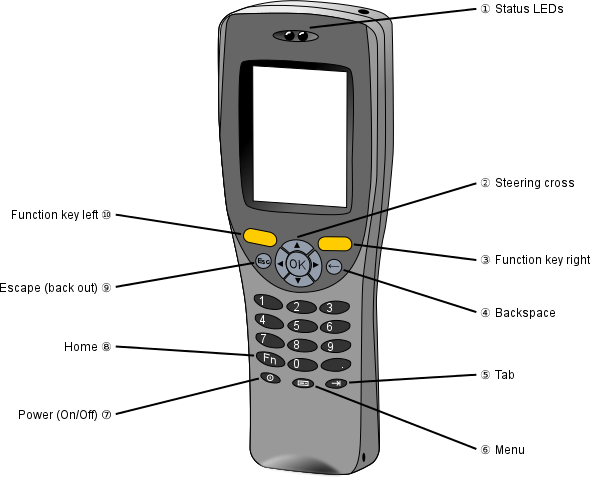Introduction
When development on the MDA Client for Android started in spring of 2012, the skeye.allegro was the only device that matched the requirements of our first customer and was actually available on the real world market.
Unfortunately it has initially been developed for Windows CE 6 and Android 2.3.4 was kind of forced on to the very same hardware which, technically, does not even fulfill the screen resolution requirements for Android 2.3.x.
Unlocking the Screen
TBD.
Android semantics of skeye.allegro's hardware keys
MDA support for the orange function keys
Android as operating system and all Android applications we tried so far have no useful function for the two large orange function keys.
MDA however is dedicated to efficient entering of measurement data of considerable numbers of measurements, so we support these two keys for navigation:
- the right function key (labeled ③ in the diagram above) can often be used to go forward to the next page resp. measurement, pressing it has the same effect as touching (clicking) the graphical "next" button displayed on the touch screen.
The "Esc" button (labeled ⑨ in the diagram above) often has the same effect, but Android's "back" / "back out" semantics furthermore navigates across application layers and even applications. - the left function key (labeled ⑩ in the diagram above) can often be used to go back to the previous page, pressing it has the same effect as touching (clicking) the graphical "back" button displayed on the touch screen.
